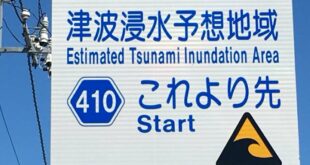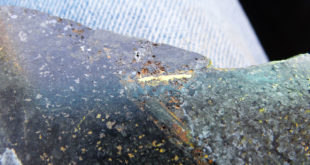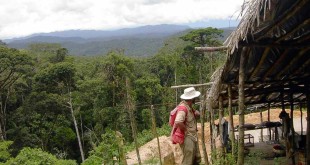As the late great baseball catcher Lawrence Peter “Yogi” Berra (1925-2015) observed:
It’s like déjà vu all over again.
History doesn’t repeat itself but it often rhymes
Mark Twain
History is bunk
Henry Ford
My buddy Bob Moriarty has done me the honour of putting my “Straight Talks” into book form and it is now on Kindle. For a measly 3 bucks you can get half of my old essays. The second half is coming soon!
Download STOM E-bookIt has been a bit of a chore reading through all my old scribblings. Bob says I was prescient on calling the last gold boom. I reckon he is being very kind because almost any knot head could see it coming after the market had been crushed and left for dead by Bre-X and its aftermath. Because I am busier than a one-armed paperhanger right now I decided to trot out these two essays which are pre-Straight Talk. Having seen the film “The Big Short” I wish I had had the means to do something back in 2001 when I was anticipating something evil from subprime loans, but instead I went off to Ecuador and risked every penny I had in the world on a gold property.
But I am digressing. What Bob and I found absolutely remarkable is how many of my essays could have been written now! If you don’t believe me just read for yourself!
The Gold Moonshot
August 19th, 2001
The numbers speak for themselves. From January 2nd, 2001, to close of trading August 17th, 2001:
| Widely held producers | Symbol | From | To | Change |
|---|---|---|---|---|
| All stocks listed on NYSE or NASDAQ. Prices in US dollars. Quotations courtesy Yahoo! | ||||
| Goldcorp Inc. | GG | $6.0625 | $11.01 | +81.61% |
| Agnico Eagle Mines Ltd. | AEM | $6.375 | $9.13 | +43.22% |
| Barrick Gold Corp. | ABX | $17.12 | $16.80 | -1.87% |
| Homestake Mining Co. | HM | $4.25 | $8.71 | +104.94% |
| Newmont Mining Corp. | NEM | $17.9375 | $21.48 | +19.75% |
| Durban Roodepoort Deep Ltd. | DROOY | $0.6562 | $1.06 | +61.54% |
| Harmony Gold Mining Ltd. | HGMCY | $4.5312 | $5.18 | +14.32% |
| AngloGold Ltd. | AU | $14.50 | $17.96 | +23.86% |
| Placer Dome Inc. | PDG | $9.75 | $11.22 | +15.08% |
With the exception of super-hedger Barrick, all these producers have shown a decent return this year to date. Some of them have shown a meteoric rise. If this rally is sustainable what’s the landscape going to look like in six months, or a year?
Planets aligning for gold – Macroeconomic unstoppable forces
Does anyone remember Mark Barton? A monument should be erected to his memory. He was one of the earliest to be claimed by the dot.com Bubble. Mr. Barton lost his entire life savings Day Trading. Despondent, he shot up the Atlanta brokerage where he traded, killing 12 people on July 30, 1999 before turning the gun on himself. This tragedy was quickly lost in sound bite cynicism, but for a brief moment Barton brought to the fore the uncomfortable and politically-incorrect reality that some people were losing money in the market, despite the spin.
The Bubble, like all before it, would eventually run its course. The media denied that it would ever end, but denial too was programmed in. (For a fascinating look at historical valuation bubbles read “Extraordinary Popular Delusions and the Madness of Crowds” and “Confusion de Confusiones” in the double volume published by John Wiley & Sons). Janet Reno and the June 10th, 2000 court-ordered break up of Microsoft may have been the trigger that precipitated the inevitable slide. Others blame President Bush. The truth: it was bound to happen anyway. The steep rise in electricity prices in the western USA was a harbinger of dot.com doom, since all those internet servers in Silicon Valley rack up huge electricity bills. Anyone with a brain could have seen that power price hikes in America’s largest economy – California, would have serious repercussions. Bubblemania though had spread like a cancer through the whole of society, promising a new paradigm where the laws of economics were suspended. Its lifeblood was access to cheap money. Like the aftermath of a great party, we all now have to clear away the bottles, empty the ashtrays and try to survive through our hangovers.
Wow! And what hangovers! According to credit card tracker CardWeb.com, the average American household owed US$8,123 on credit cards last year, up from US$3,223 in 1991. Consumer debt hit a staggering US$7.2 trillion by the end of the first quarter. Don’t count on the US Consumer bringing this baby back, despite tax rebates – they’re all max’d out. They have already been turning to home equity loans to preserve the “lifestyles to which they have become accustomed to”. On any given day you can see dozens of ads for home mortgages geared to consolidate debt, on CNN and CNBC. There’s been lots of talk about the quality of sub-par loans since Superior Bank in Chicago went bust a few weeks ago. Bank of America stopped doing car leases last week. No less than the Wall Street Journal ran an editorial last week about the shakiness of Fannie Mae and Freddie Mac. The US housing market will probably be the last prop of the economy to be kicked out.
On top of all of this we have a declining US stock market, mounting industry layoffs, big problems with Argentina and Brazil debt, the Japanese stock market at a 16 year low, and a rapidly declining US dollar.
No surprise, investors are looking for a safe harbour – not just for wealth creation but wealth preservation, hence the steady rise in gold stocks, anticipating an increase in metal prices. If the Fed continues to drop interest rates there will be a flight of capital out of US equities and into gold of course. Gold as an investment with minimal downside risk has been a no-brainer for years because ounces can’t be replaced at $US250-270 prices, at least not by most of the industry. Producers have been cushioned by the few low cost mines out there, and in South Africa, by a depreciating Rand. The simple law of supply and demand would dictate that if new mine supply starts to get severely crunched, prices have to go up. This despite Central Bank sales, which have capped gold rises, but can’t do so indefinitely, especially if there is a huge surge in investment demand.
How will it all unfold? From looking at trading volumes it would seem that most investors caught in the tech wreck are still holding their tech shares. I know that my friends who got caught out still have all their holdings, hoping for some Las Vegas style last-throw-of-the-dice bailout. All of them are hoping against hope that the US economy will turn around and that Bubblemania will live again. It may take the bankruptcy of some former high flyer, such as Lucent or Amazon to give everyone a wake-up call that their share certificates could end up expensive wallpaper. However, should the broad investment community discover the gold market, particularly gold shares, we could see a boom that would dwarf the speculative 1994-97 mania in junior golds. How so? Remember, that the entire gold market is small. I believe I saw a figure of $US20 billion for the whole lot recently. A lot of people in the market actually got out at the right time and made money from tech and are sidelined, looking for the “Next Big Thing”; others are looking to recoup their investment losses. Even accounting for the equity that has been vaporised, a small shift into the gold market could go a long way.
What will the next boom look like?
This market may really get rolling after the American Labour Day holiday in early September, when everyone gets back to work from summer holidays. Circle Tuesday, October 9th on your calendar. That’s the day Reg Howe’s lawsuit goes back to court. No doubt there will be a lot of media interest in gold that week, and it will be “crash season”……
So with this great conjunction of bullish forces, what will happen if indeed the price of gold shoots to $600 and stays there? Obviously, many people are already anticipating some price rise, hence the movement in gold shares over the last few months displayed at the beginning of this essay. The phenomenon is now gaining momentum and gold shares were mentioned pretty well every day on CNBC last week as the price broke through $US280. The impact of television should not be discounted, since most American households were originally beguiled into stock market investment by “investing as entertainment” on the telly. If gold is portrayed as an alternative to techs on Bubblevision it will catch on fast. Also many networks and wire services have consolidated with other media and now share reporting staff. The other comparatively recent phenomenon is the medium you are staring into now – the Internet. A large number of the investing public get their information on the internet; many more so than in the 1994-97 junior gold mining boom. The internet sites LeMetropolecafe.com, Kitco.com, the MiningWeb.com and Gold-Eagle.com are getting increasing numbers of “hits”. How fast will junior gold penny stocks move if they get the same buzz on RagingBull.com and SiliconInvestor.com chat rooms that the techs got?
The legacy of the last few years for the junior miners can be summed up in one word – carnage. Large numbers of companies have been delisted, as the speculative bubble deflated, post-Bre-X. We weren’t however looking at a sudden drop from $600 gold that busted the junior market. Gold prices were fairly steady in the $380-$400 range through ’94, ’95 and ’96 as the junior market took off. What would a steady or even steep price rise do now? When investors switched allegiance to techs and dot.coms (at that time “the next BEST thing”), venture capital dried up. Those companies that survived often lost their best assets, because they were unable to pay mounting option fees for properties. Many turned to homegrown projects and hunkered down to weather out the storm. Now, there are lots of junior companies out there with near valueless prospects, and a sad history of having to abandon promising projects, or joint venturing them at discounts to the majors. The majors have taken advantage of the situation to invest in the best of the junior companies; tantamount in large degree to a switch to exploration by proxy. Often this is not a vote of confidence in the junior’s exploration staff, but may be a strategic move into a new country, new gold camp, or because the major likes the area geology.
All is not bleak however. A tongue-in-cheek editorial cartoon in the Northern Miner newspaper recently had the caption: “Somewhere out there, a fabulously rich deposit waits to ignite the market. Hopefully, the two people still out there looking, will stumble across it.” Imagine, the investing public mobilised behind the NEXT big thing! Imagine what would happen if the gold market became the only game in town! Imagine the profits to be made in the next penny stock company to make a colossal gold find! There are junior companies out there beginning to explore again. There are new opportunities. All we need is the proverbial spark to make this market catch fire. With share prices of gold producers on the rise, it is only a matter of time before we see new junior companies sprouting up everywhere and a healthy exploration scene restored.
Keith M. Barron PhD.
Practical Advice in Picking Junior Golds
Posted on July 13, 2001 on http://www.lemetropolecafe.com
Dot.coms and techs are crashing and burning daily, and despite all the claims of the gurus and spinmeisters from Bubblevision that the bursting of the tech bubble would be an “isolated phenomenon” there’s no getting away from daily reports of negative earnings (euphemism for losses) affecting companies that produce anything from footwear to flight simulators. A stock market crash may not be in the offing, but we can expect markets worldwide to continue their “middling down”. Greenspan is lowering interest rates below the rate of inflation in a heroic effort to revive the economy. It didn’t work in Japan, and it won’t work in America.
Thus the stage is set for historically unparalleled opportunities to create wealth – REAL wealth, not dot.com paper wealth. I’m talking about gold mining and exploration. When the price of gold skyrockets – and it will – every company with some exposure to gold mining or exploration will stand to benefit. The old hedgers like Barrick and Anglo will benefit too, but the really big profits – the 20, 30, 50 or even 100 baggers – will be made in the juniors.
First, a bit of a history lesson for those who have watched too much CNBC and suffer from “sound-bite memory”. Back around 1993-94 the exploration business suddenly went global, as legislation and fights with environmentalists drove explorationists out of North America. Numerous South American countries reformed their mining and foreign investment laws. Russia and the newly created “-Stans” opened their doors. Apartheid ended in South Africa. Some truly remarkable exploration successes followed and fed what by 1996 had become a feeding frenzy. Arequipa Resources, a tiny junior out of Vancouver, found what would become one of the world’s best gold mines with +7 million ounces. Between October, 1995 and end of October 1996 when it was bought out, shares rose from $1.15 to $30.00; a 2509% increase! The race was on internationally to get ground – the remoter the better. All of it could be “elephant country”.
We all know what happened next. A Calgary outfit named Bre-X spoiled the party with the biggest fraud in mining history in a remote area of Indonesia. But let’s not dwell on that. By the time the fraud was uncovered in March, 1997 the market was tanking anyway as venture capital was being siphoned away by newly-created “dot.coms”. From one bubble to another bubble…….
However, let’s not lose sight of one important fact, La Pierina was REAL. It’s presently being mined by Barrick. Gold exploration is risky, and speculative, but the payoff can be bigger than cocaine smuggling – and it’s legal!! But investors don’t have to be entirely at the mercy of slick promoters. To shy away from junior golds because of the Bre-X fraud will be to sleepwalk through the greatest money-making opportunity of our lives. If gold becomes the “only game in town” we stand likely to see gold companies rise to valuations only previously witnessed in the tech bubble. Already the gold funds are the best performing funds this year. With mine supply drying up due to orebody depletions and mine closures, the majors will be increasingly pressured to secure new reserves. Since the majors almost unanimously and short-sightedly gutted their exploration staffs in an effort to cut costs, the juniors will once again have to step up to the plate. But this time they will be in the driver’s seat.
We expect that as the boom gets underway the spinmeisters will daily dredge up the Bre-X story and try to throw cold water on the gold market. Eventually they’ll come on board and pile into the market. The boom is already picking up speed, though the media continue to smirk and deny that it is happening. For the first time in 4 years, juniors can once again raise venture capital for exploration. So, this time around how do you make your portfolio “Bre-X proof”? – the goal being to identify companies and projects – early – which stand the most chance of being bait for the majors – but at top dollar. We’re not talking about Mickey Mouse companies with a promoter at the helm and a tired old prospect that has been flogged to death since 1993. We’re talking about new, aggressive companies with solid new plays. Any major, when thinking of joint venturing or buying out a junior would conduct a geological and a legal due diligence. You may not be a lawyer, nor a geologist, but here are a few tips that will not only bring you peace of mind in the security of your investment but will allow you to separate the wheat from the chaff. Guaranteed, that if a company can’t satisfy these criteria, after Bre-X, no major would touch ’em with a ten-foot pole.
- A posting on this website recently said that the three most important criteria to picking a junior were “strong management”, “good properties” and “money in the bank”…..BUT we’re buying shares of a gold exploration company – not a real estate firm. The author left out “an experienced technical team”. If the junior has three investor relations people and no geologists or geo-engineers they are to be avoided. Period. Also, I’d be less likely to invest in a company that lets all technical work be handled by a consulting company. Consultants are hired hands with no vested interest in making a company a winner, nor do they usually provide project continuity as would someone on staff. Chances are, if a company doesn’t have a geological staff they are just speculators. Canadian companies now need to have a “qualified person” (a geologist or geo-engineer) sign off on press releases. Don’t be afraid to phone up the company and ask management what the qualified person’s relationship is with the company. Are they getting their hands dirty in the field? Or are they sitting in the offices and are fed information by others? Any formal technical document that is to be used to raise money needs to have a “certificate of qualifications”. Ask to see it. Ask them to fax you a resume of the qualified person !…. hell, it’s your money at stake!
- Any company with a legitimate new discovery will have an independent, third party project assessment done as early as possible – perhaps several. We can expect that companies will go to extreme means to prove their finds are real.
- Is the property in a geographical area where gold has been found before? Are there government reports relating to the area? Usually this kind of information can be found on the internet. A company with a new discovery in the Carlin Trend, next to Kalgoorlie, or in the Timmins camp wouldn’t be hard to believe, but if the company claims to have found the world’s largest gold deposit in Nebraska or Paraguay then be a skeptic! Many juniors play it safe and tie-on their land positions to known deposits. These are what are called “proximity plays.” Though this strategy sometimes pays off, the juniors most of the time simply try to bask in the reflected glory of the company next door with the goods, and don’t do any of their own exploration. Make sure the company is out there doing work, not simply speculating in real estate.
- Beware of companies that say their deposits are “heap leachable” or their ore “free milling” if they can’t back this up with an independent metallurgical study.
- What assay laboratory does the company use? Are they licensed? ISO 9000 Series accredited? In the past bubble we saw unlicensed assayers and analytical laboratories that had no history of working with mining companies suddenly churning out numbers. If the company can’t or won’t tell you the name of their lab avoid them. Don’t be afraid to phone up an unfamiliar lab and ask them if they have other clients.
- Sins of omission: Does the company have the title to the property and all permits to carry out exploration? In the past boom, many companies had only filed applications or signed letters of intent, yet left it to the investor to “fill in the blanks” and believe that the property was a solid asset (remember Bre-X didn’t have all its CoW’s (contracts of work in order?). Is the property next to a Wilderness Area, National Park, Archaeological site, Panda habitat? Is the project likely to run into environmental opposition?
- Sins of commission: These are cases of outright fraud and harder for the layperson to detect. As a rule remember that no gold deposit in the world will produce consistently good (or incrementally increasingly better) drill results. There will ALWAYS be some misses. We are dealing with a natural phenomenon after all. If a company exponentially increases their reserves without increasing their number of drill rigs, something is very wrong. Beware of companies that don’t carry out occasional check assays with a separate lab. Some things are just common sense. For instance, during the last boom I came across a company that said their deposit was “open pit-able” though the ore zone didn’t start until 300 metres down! No one removes 300 metres of waste to get to the pay zone. Never. As one of my old professors used to say, it’s only “ore” if you can mine it at a profit. Also, high grade gold, platinum and palladium NEVER occur together in nature except EXTREMELY RARELY so be forewarned!
- Obfuscation part 1: Beware of companies that mix up different units of measurement, especially metric and imperial units; ppb, ppm, ppt, oz/t, g/t in the same press release. ppt is parts per trillion, ppb is parts per billion, and ppm is parts per million (ppm is the same as grams per metric tonne). I’ve seen companies post low gold results in ppt to make them look better. Recently I saw a company post their results in feet rather than metres because numerically they look larger, though they used metric parts per billion. Bigger numbers = better results right? Wrong. Check the units! Most rocks around the world contain 1 to 3 ppb of gold (so does concrete). 20-100 ppb would be “low anomalous” (unusual, but not really too interesting). Greater than 100 ppb starts to get interesting, and 1000 ppb (i.e.1 ppm or 1 gram per tonne) can be very interesting depending on the context. Assays of tens of ounces per ton (or 1000’s of grams per metric tonne) are bonanza grades. However, whether any of it is mineable at profit depends on where it is and how much of it there is. Any encyclopaedia will give you metric and imperial equivalents.
- Obfuscation part 2: Never invest in a company that measures value of their rock in “gold equivalents” unless they are willing to give you a breakdown of their true values. This is an old trick to inflate the numbers. For instance, a company whose rock contained gold, copper, silver, bismuth, cobalt and nickel worked out the value of the contained metals and reported it only in “gold equivalents” though some of the metals occurred merely as traces, and the likelihood that all these metals would be recovered together in a commercial operation was just about nil. In most jurisdictions releasing results only in “gold equivalents” is illegal.
- Desert dirt scams: Every time there is a boom in gold mining stocks these things resurface. The line is always the same, “We have a new proprietary method to liberate gold from rock and soil.” The following is always the kicker,” the contained gold is not amenable to conventional fire assay.” If you see either phrase take your money and run. If it can’t be conventionally fire assayed it can’t be conventionally milled either (see how the two nicely fit together)? A Vancouver-based company a few years ago claimed to have found hundreds of millions of ounces of gold in desert dirt near Death Valley. They used some proprietary “black box” technology to do the assaying “in house”. Everyone who invested and believed the hype lost everything.
- Check out the principals of the company: Have they ever been banned from trading on a stock exchange? Have they been convicted of insider trading? Do they have any felony convictions? Your broker should be able to help you find this out. Do a search on their names using one of the many internet search engines. You may dredge up some newspaper articles they would rather forget. Felderhof & Co. of Bre-X fame had been banned from trading on the ASE.
This list is not intended to be exhaustive, but it contains the important stuff. Remember, just because a penny stock is cheap doesn’t mean it is a “buying opportunity”. Do your own “due diligence”. Don’t always simply rely on the word of your broker – he is probably only passing along something he heard anyway. Don’t be afraid to ask tough questions. Many of the promoters in the gold boom of ’96-’97 switched into dot.coms. If they aren’t selling used cars now they’ll be back to gold soon. Enjoy the coming ride to riches. Good luck and happy hunting!
Keith M. Barron
Copyright ©2016
 Straight Talk On Mining Insights on mining from economic geologist Dr. Keith Barron.
Straight Talk On Mining Insights on mining from economic geologist Dr. Keith Barron.





Since I’m a long time gold investor, I enjoy the positive slant
Of these essays. It doesn’t hurt that they are very well written!
“Dr.” Barron –
As the songwriter (jimmie webb) wrote many years ago…..
“You got to know when to hold’em…..know when to fold’em”.
And you sure seem to have done just that.
Congrats.
Keith,
EXCELLENT WORK!
If only all investors would take your advice and look before they leap! (not to have a bre-x reference or any thing) but due diligence is critical.
Thanks for educating the non mining crowd.
Nat
Thanks You , This is an excellent article.